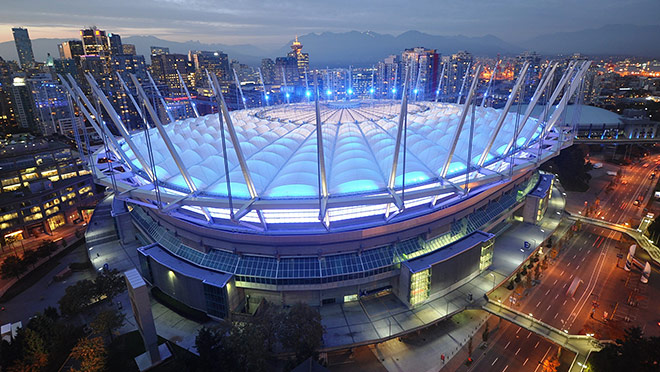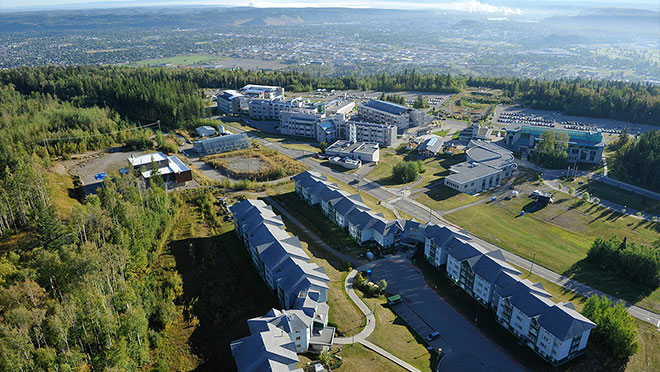Beyond the Super Bowl, arenas get greener

The eco footprint of sports is huge, but change is happening
When the NFL's biggest game comes to Glendale, Arizona's State Farm Stadium on Feb. 12, the eco footprint of the event will hardly be top of mind for the 75,000 in attendance or the estimated 100 million who watch it on TV.
They'll be more interested in what's happening on the field, and who's singing at halftime: it's Rihanna, back after famously declining to do it in 2019 in a show of solidarity with quarterback and activist Colin Kaepernick. Most fans won't know that the game will be played in a state still plagued by a drought that has lasted 23 years, even though an increase in rain and snow in recent months has left 27% of the state drought-free to start 2023.
Few will know that stadium is saving $75,000 on its annual energy bills by taking part in a demand response program with the local energy provider. Each time an emergency such as extreme summer weather threatens the stability of the power grid, energy use at the stadium is temporarily reduced. And each year, the NFL purchases renewable energy certificates equivalent to the estimated electricity use at all its games to help increase clean electricity capacity in the U.S.
But green energy offsets aren't nearly effective as cutting down on energy use and emissions in the first place. There's pressure on sports stadiums and arenas around the world to use innovative ways to reduce GHG emissions and energy use, and arenas in B.C. are no exception.
A few recent and ongoing energy-efficiency upgrades in B.C.:
- A switch to LED lighting at BC Place Stadium in 2019 not only reduced energy use by 619,000 kilowatt-hours annually, it reduced the number of lights needed and improved lighting for TV broadcasts.
- Replacement of old, inefficient natural gas fired boilers and other heating equipment with a new heat pump system that uses waste heat from Vancouver's Kitsilano ice rink to heat the adjacent community centre in 2018 reduced CO2 emissions at the facility by more than 80%.
- A 77% drop in natural gas consumption at Kin Centre in Prince George is expected through the introduction of heat recovery and other planned efficiency upgrades at the centre, which houses three ice rinks.
- $7,000 in annual energy savings through a lighting upgrade at Richmond Curling Club, after the City of Richmond worked with BC Hydro to come up with a way to make lighting brighter (and less expensive) at the club.

Better lighting through LEDs at BC Place
TV broadcasters now demand on-field lighting bright enough to broadcast in high-definition and 4K. BC Place Stadium, which will house the World Rugby Sevens event from March 3 to 5, 2023, delivered on that appetite for improved lighting from broadcasters while significantly reducing energy use with a lighting upgrade.
Originally opened in 1983, BC Place reopened in 2011 after a $514 million revitalization that added technologies including 1,200 video screens, building control automations, and a retractable roof system to open the roof on fair weather days. But until a 2019 upgrade, the stadium's biggest user of electricity was lighting to illuminate the playing field.
BC Place worked with BC Hydro to deliver an energy-efficient "Field of Play" lighting system that reduced the number of lights needed while delivering on more than 50% energy savings and significantly improved lighting quality.
Did you know? The Northern Lights Display – the 360-degree coloured light show system on the exterior of the BC Place Stadium roof – is designed to allow light into the stadium during daylight hours to reduce the amount of supplementary light required in the interior. Colours in the semi-transparent Northern Lights Display are adjusted to promote upcoming stadium events as well as national and international recognition days such as Remembrance Day and World Human Rights Day.
Seattle's Climate Pledge Arena aims to be net zero for carbon
The National Hockey League's newest team, the Seattle Kraken, play in a multi-use arena that stands as an inspiration for the designers of future sports facilities. Its goal is to become the world's first zero carbon arena.
A massive redevelopment of what was previously Key Arena was built on the bones of the original – the exterior and roof – and reopened in 2021 with new systems in place to erase daily use of fossil fuels. Among the measures at Climate Pledge Arena are:
- All mechanical systems, heating, dehumidification and cooking, were converted to electric.
- Solar panels installed on the arena's atrium and First Avenue garage supply renewable energy for building operations.
- The elimination of all single-use plastics in the stadium by 2024.
- Reduction in the number of lighting fixtures in the stadium, from 442 to 372, while improving lighting levels.

